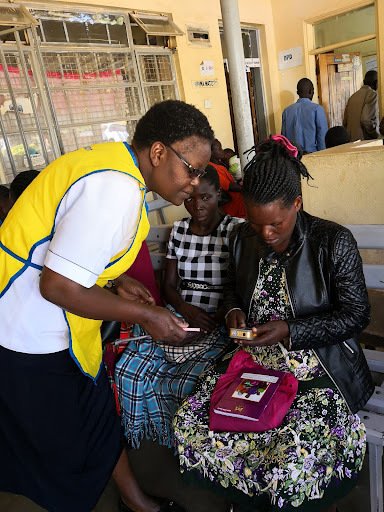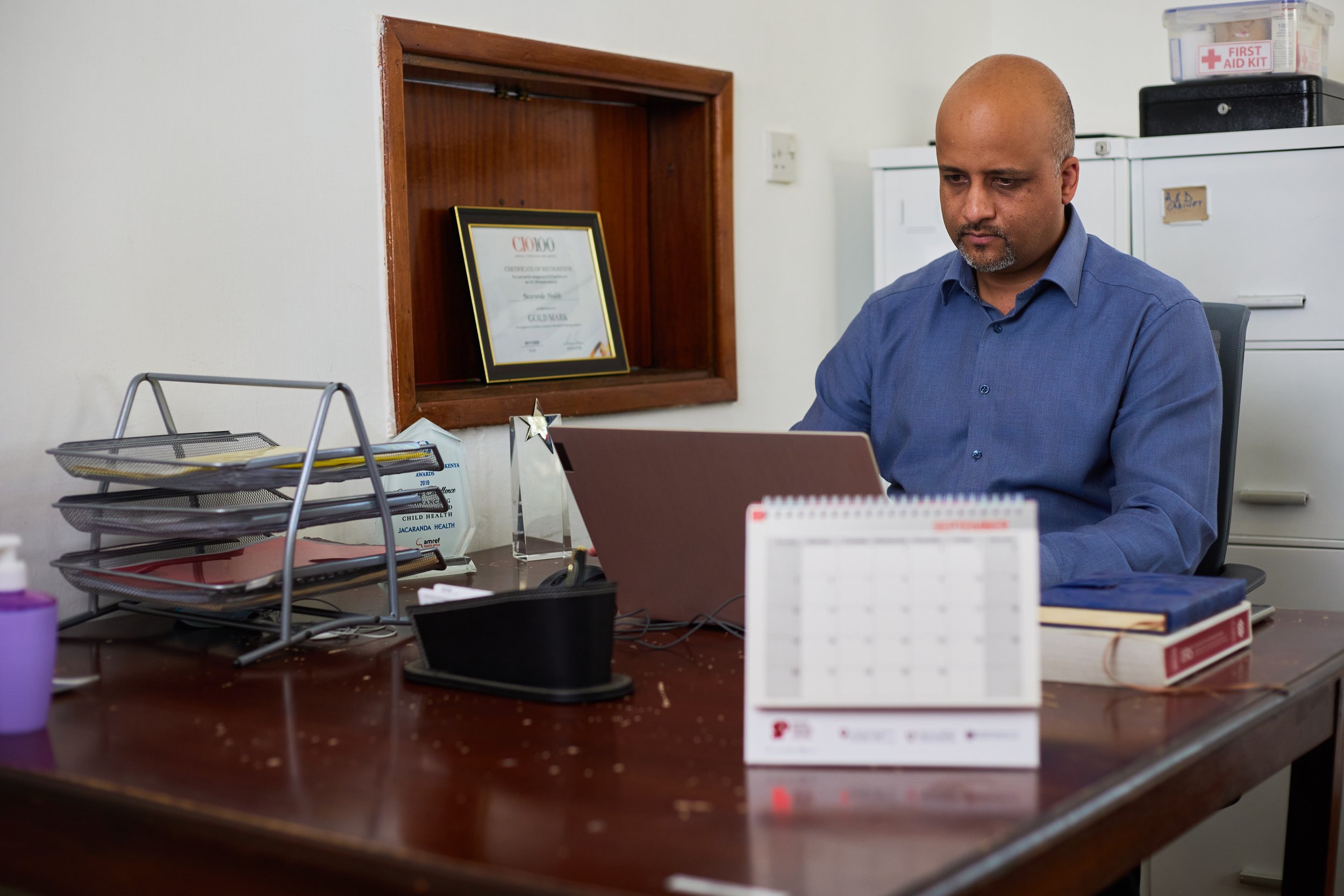As we continue to test, build, and adapt our solutions to reach more mums and nurses, our program teams are asking converging questions around efficiency versus scale, namely; ‘how do we make accessing our tools easier?’, ‘how do we maintain their quality at scale?’, and ‘how do we ensure our program teams continue to innovate whilst responding to increased numbers?’.
The answer – in part – lies in tech, which helps scale quality interventions faster by reducing barriers to uptake and use of our solutions, saving time and human error, and generating data to help us see where to improve.
1. Reducing barriers to uptake and use for mums and nurses
Building an innovative service is futile if its intended users can’t access it. We quickly realized that to drive rapid uptake of our solutions, we needed to meet our mums and nurses where they are, leveraging platforms they already use and are familiar with. From its beginnings, our digital health tool PROMPTS was built as an SMS support package to ensure its accessibility to 100% of Kenya’s population and remove financial barriers to buying data. DELTA, our virtual learning assistant equipping maternity nurses with critical emergency care skills originally worked through Telegram (an instant messaging system), but nurses were discouraged by having to download an app which used up precious phone memory.
WhatsApp, widely used by healthcare providers, offered a solution; offering skills-building content in a platform they already had, and knew how to use. The results? Enrollments have grown and more healthcare providers than ever are now equipped with emergency skills to save thousands of mums’ lives.
2. Saving time and human error
Human-led processes are hugely important where other humans are concerned. Our PROMPTS helpdesk, for instance, relies on its well-trained, passionate agents to ensure mums with unique emergencies receive personalized hospital referral. But as we scale, maintaining certain manual processes can lead to slow delivery, or human errors. Where health is concerned, this can be life threatening.

Automation helps improve the accuracy, efficiency, and speed of programs – without relying on human input. With PROMPTS, we’re using tech to automate manual processes to reduce the time connecting mums to lifesaving information. Before, program staff would receive a list of names and numbers of newly-enrolled mums from facilities, and begin an error-prone, and time consuming process of tallying and uploading mums’ information to the platform. Now, through two ‘Antenatal’ and ‘Postnatal’ WhatsApp Business accounts, categorizing and uploading this data is automatic, giving program teams 60% more time to focus on what they do best; innovating and expanding the platform.
Automation through tech has also supported our MENTORS program. When the program started, the process of scoring our nurses’ progress through the curriculum was expensive, prone to error, and lengthy, often taking three weeks to collect, input and analyze the data, before finally sharing their results. As the EmONC program expanded across counties and facilities, this process was impossible to scale sustainably. Now, data is captured directly on WhatsApp, auto-processed into dashboards and available within minutes instead of weeks- motivating nurses with instant feedback on their skills development, and giving us real time updates on gaps in provider knowledge across the country.
3. Generating data to identify gaps
In the same way we use technology to collect and share real time data on health system challenges with our government partners, it also gives greater visibility into where and how we can improve our own solutions to ensure they’re operationally fit to scale. One example is our PROMPTS helpdesk, which fields thousands of messages from mums a day. We knew our agents were working hard to respond to mums and refer them care, but couldn’t understand why many questions remained unanswered.
The introduction of a new technology – Salesforce – gives us greater visibility into the process, collecting and analysing data on daily call numbers, response times to mums, and how and when issues are resolved. All this means the helpdesk team is able to fine tune its workflow and allocate its agents better, and response times can now be counted in minutes (in the case of an emergency), or hours for non-urgent cases.

As we scale our solutions to reach a critical mass of public hospitals and an even greater number of mums and nurses, there’s never been a more important time to build operationally effective, tech-enabled models that put our users at the centre of design. Whilst our solutions have been proven to address often-complex MNH challenges at the systems level, the tech that underpins them can, and should be relatively simple – ensuring that when we come to transition them, our governments partners work with cost-effective, high-quality solutions that are accessible to all.

